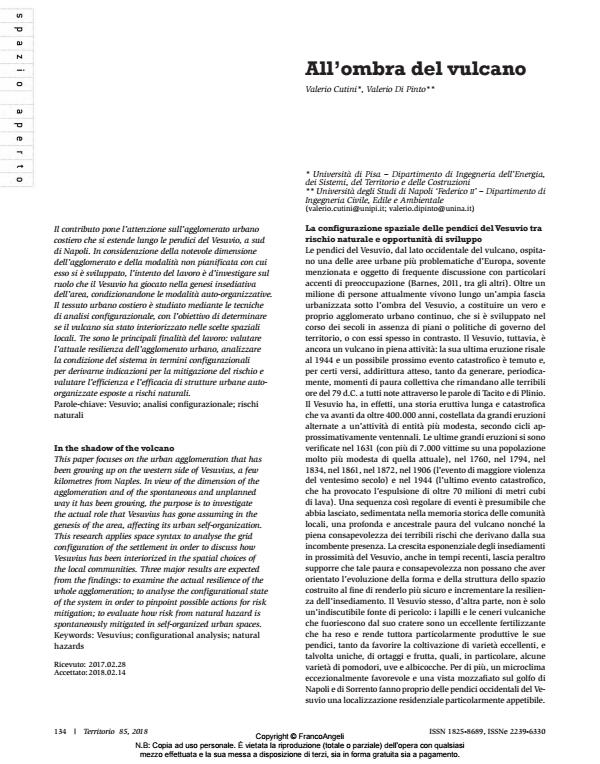In the shadow of the volcano
Journal title TERRITORIO
Author/s Valerio Cutini, Valerio Di Pinto
Publishing Year 2018 Issue 2018/85
Language Italian Pages 14 P. 134-147 File size 1845 KB
DOI 10.3280/TR2018-085016
DOI is like a bar code for intellectual property: to have more infomation
click here
Below, you can see the article first page
If you want to buy this article in PDF format, you can do it, following the instructions to buy download credits

FrancoAngeli is member of Publishers International Linking Association, Inc (PILA), a not-for-profit association which run the CrossRef service enabling links to and from online scholarly content.
This paper focuses on the urban agglomeration that has been growing up on the western side of Vesuvius, a few kilometres from Naples. In view of the dimension of the agglomeration and of the spontaneous and unplanned way it has been growing, the purpose is to investigate the actual role that Vesuvius has gone assuming in the genesis of the area, affecting its urban self-organization. This research applies space syntax to analyse the grid configuration of the settlement in order to discuss how Vesuvius has been interiorized in the spatial choices of the local communities. Three major results are expected from the findings: to examine the actual resilience of the whole agglomeration; to analyse the configurational state of the system in order to pinpoint possible actions for risk mitigation; to evaluate how risk from natural hazard is spontaneously mitigated in self-organized urban spaces.
Keywords: Vesuvius; configurational analysis; natural hazards
Valerio Cutini, Valerio Di Pinto, All’ombra del vulcano in "TERRITORIO" 85/2018, pp 134-147, DOI: 10.3280/TR2018-085016